DATELINE – March 6, 2022 – Lewisville, Texas
While out on an hike in early March of this year, an unusual looking hawk caught my eye (see the pictures below). My first impression was that it was just an odd looking Red-tailed Hawk. This would have been the natural answer, as Red-tailed Hawks are very common in the metroplex during the winter after a large number of northern hawks migrate into the North Texas area from further north. There is much variety in the appearance of Red-tailed Hawks, from from subspecies to subspecies, and even from individual to individual. With a greater mix of hawks in the area, there would be a far better chance to encounter an atypical variant.


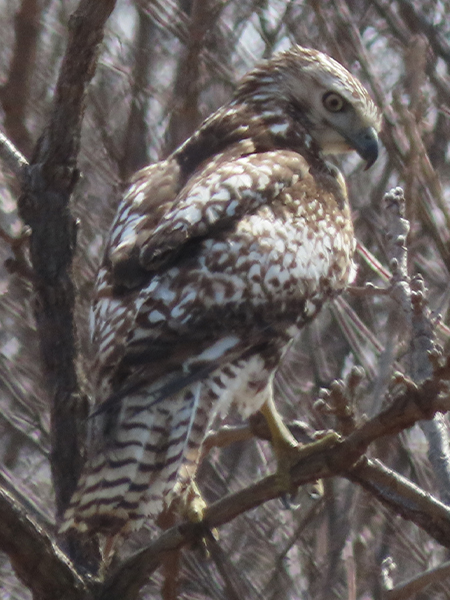
white tail feathers with dark barring.
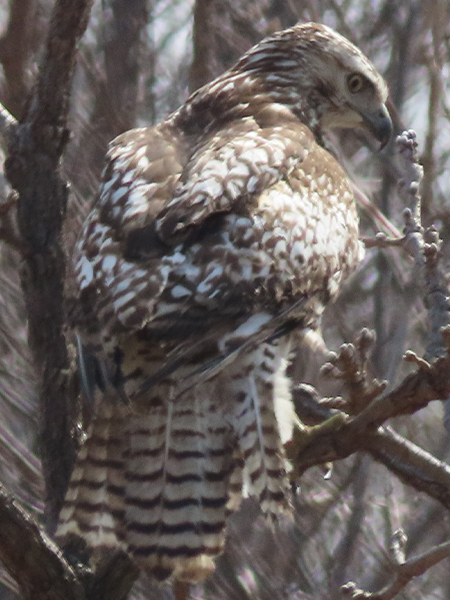
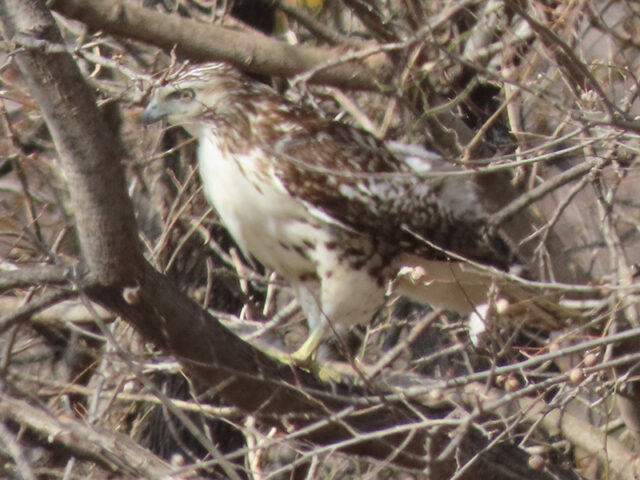
This bird was decidedly different from the Red-tailed Hawks I am used to seeing around town. This particular individual was very much lighter in color than usual; with large patches of white feathers on the upper surfaces of its wings. Further, the tail feathers were light in color and barred—not the rusty color the Red-tailed Hawk derives its name from. There was a possibility that this was a juvenile Red-tailed Hawk. Young Red-tailed Hawk have barred tail feathers during their first year, but the light coloration struck me as not quite right. Some doubt about the ID began to creep into my mind.

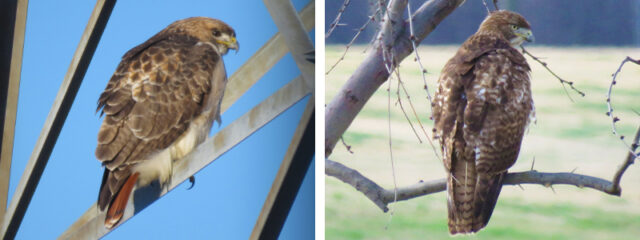
Note the barring on the tail of the juvenile
My next thought was that this could be a Ferruginous Hawk—a rare visitor to DFW. If true, this would be a very exciting observation. A Ferruginous Hawk would be unusual in the Dallas/Fort Worth area, as the bird’s normal winter range ends well to the west of the metroplex. Still, I seemed to recall a picture from a field guide that might be a pretty good match.

Fortunately, many field guides are available on mobile devices these day, and I had one at hand to pull up. As you can see in the illustration below, Ferruginous Hawks come in many varieties, and to complicate matters further, adults and juveniles look decidedly different from each other.
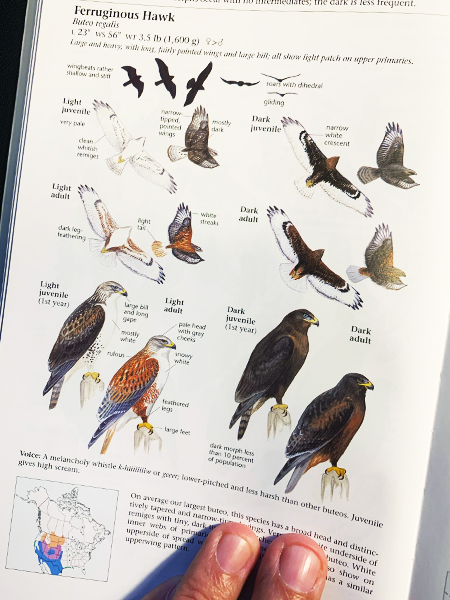
Sifting through the illustrations, I believed I had found a good match in the juvenile light-morph Ferruginous. But there were problems with this ID. The likeness with the image in the book was superficial and incomplete—something that is not unheard of with a bird that can express a wide range of variations between individuals of the same species. In these cases field guides do their best to provide general illustrations with adequate detail to make the ID. But sometimes it’s just not enough.
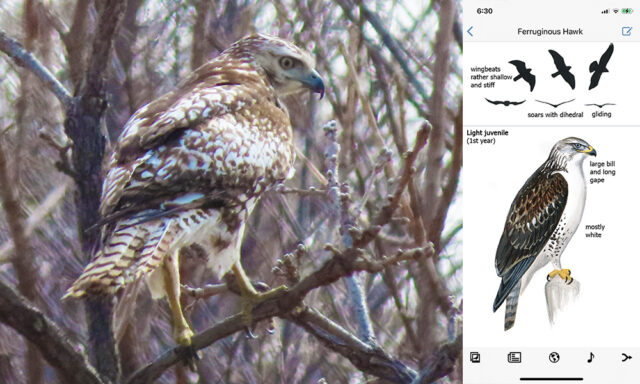
I spent a good deal of time trying to convince myself that this bird really was a Ferruginous Hawk, but with this bird there were some important characteristics that could not be verified from the provided drawing. Even more so than the Ferruginous Hawk, Red-tailed Hawks come in a vast array of different colors and patterns. There are a number of different subspecies: the Eastern Red-tailed Hawk, the Harlan’s Hawk, the Krider’s Hawk… to name just a few. Could one of these be a better match? There was more work to be done.

The more I reviewed my images—including some that were just barely sufficient to check diagnostics against—I began to see traits that suggested that this bird may just be a slightly unusual looking Red-tailed Hawk after all. There are several key indicators that reliably suggest Red-tailed Hawk across many different variations, especially if all or most of these characteristics can be shown to be present. See the graphic below for tips on how to ID Red-tailed Hawk from these physical features…
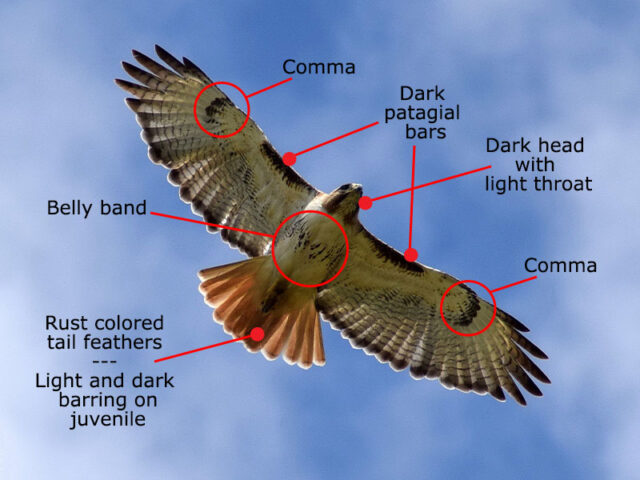
I took another look at my pictures—especially a few I took while the bird was in flight—keeping the Red-tailed Hawk diagnostics in mind. Many of these pictures were taken at great distances and when the hawk was moving between perches. It is sometimes difficult to be sure if what you are seeing in these pictures is actually a pattern on the bird or just an imaging artifact on a photograph taken under non-optimal conditions. Still, some of these pictures seemed to show Red-tailed Hawk characteristics. See below for an example with what appears to be Red-tailed Hawk characteristics noted.
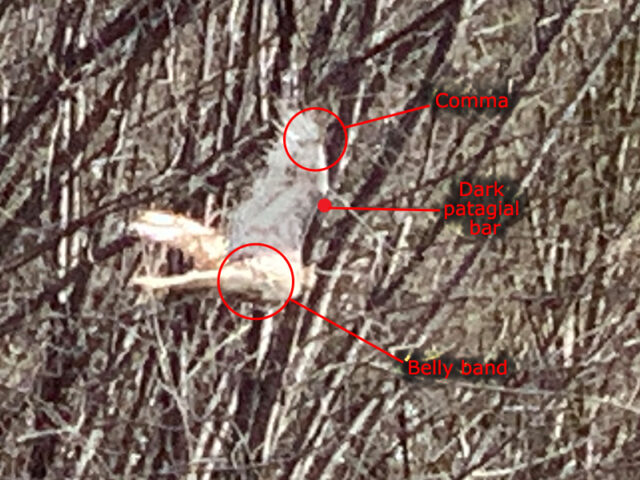
Not yet completely satisfied, I began looking for additional support for the ID. Of all the features display on this unusual hawk, I felt like that odd tail feathers might be the best chance for a good, firm, positive ID. Tail feather banding was the most notable. More research was going to be required, and a good place to begin would be to drill down on the tail feathers. Fortunately, there is a great online reference for this type of research in the form of the USGS Feather Atlas. On this website I was able to find examples of tail feathers for both juvenile Ferruginous Hawks and juvenile Red-tailed Hawks.

As you can see in the illustration above the barring on the tail feathers is a better match for that of a juvenile Red-tailed Hawk than it is for a Ferruginous Hawk, but there is still a problem—the feathers on the hawk I photographed are much lighter in color than what is typical on a juvenile Red-tailed Hawk. This was a problem, but again there seemed to be a possible answer.
In the far north of the continental United States there is a light-morph version of the Red-tailed Hawk known as the Krider’s Red-tailed Hawk. This bird looked to be the best match yet for the odd hawk I had photographed. I searched the FEATHER ATLAS for images of Krider’s tail feathers, and sure enough the website had records of them. The match looked good. See below…
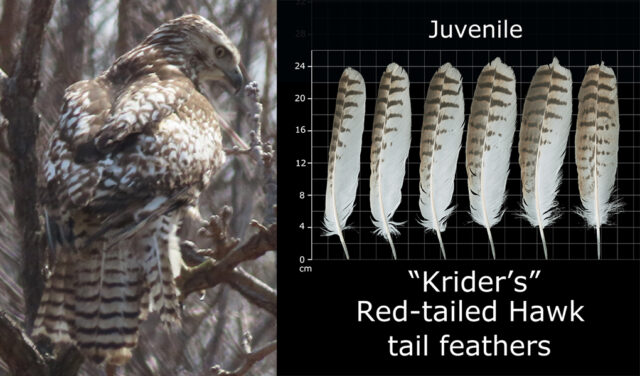
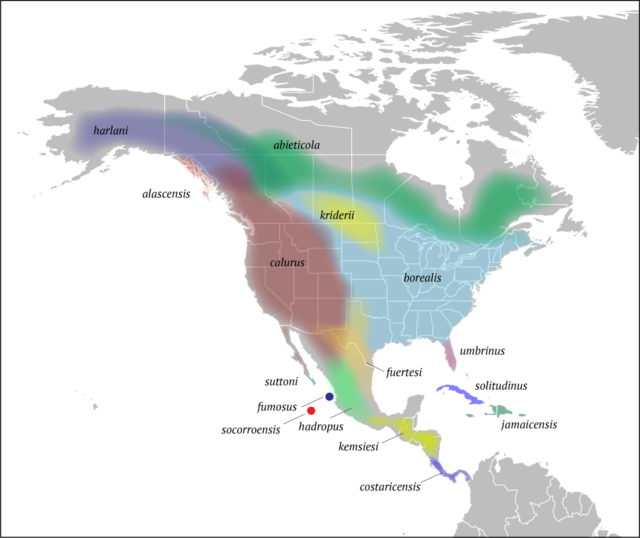
Image from The Red-tailed Hawk Project
So there you go. Mystery solved. A first year juvenile Krider’s Red-tailed Hawk on a North Texas vacation very far away from his usual haunts.



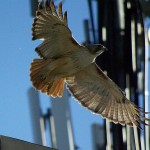
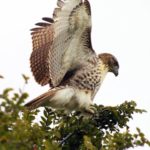
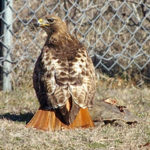


Hi, I’m trying to ID a hawk and came across your webpage. I’m particularly interested in the book you are using as a reference, as a few years ago I saw a wonderful book on hawks (different morphs), various raptors, and if I recall correctly as well eagles, falcons etc. – unfortunately I didn’t make note of the title/author and as I’m a beginner birder, I’d love to find that book again. Would you mind sharing the title and author(s) of your book. Thanks sooo much in advance! Fran